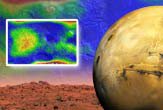This is one of the best (i.e. realist) article I've read today.
http://www.canada.com/national/nationalpost/news/story.html?id=bd26e1eb-dfbe-4296-8367-0de61729a098
Monday, November 07, 2005
PARIS -- France will impose curfews under a state-of-emergency law and call up police reservists to stop rioting that has spread out of Paris' suburbs and into nearly 300 cities and towns across the country, the prime minister said Monday, calling a return to order "our No. 1 responsibility."
The tough new measures came as France's worst civil unrest in decades entered a 12th night, with rioters in the southern city of Toulouse setting fire to a bus after sundown and pelting police with gasoline bombs and rocks. Earlier, a 61-year-old retired auto worker died of wounds from an attack last week, the first death in the violence.
Asked on TF1 television whether the army should be brought in, Prime Minister Dominique de Villepin said, "we are not at that point."
But "at each step, we will take the necessary measures to re-establish order very quickly throughout France," he said. "That is our prime duty: ensuring everyone's protection."
The recourse to curfews followed the worst overnight violence so far, and foreign governments warned their citizens to be careful in France. Apparent copycat attacks took place outside France, with five cars torched outside the main train station in Brussels, Belgium. German police were investigating the burning of five cars in Berlin.
The violence started Oct. 27 among youths in a northeastern Paris suburb angry over the accidental deaths of two teenagers but has grown into a nationwide insurrection.
The mayhem is forcing France to confront anger building for decades in neglected suburbs and among the French-born children of Arab and black African immigrants. The teenagers whose deaths sparked the rioting were of Mauritanian and Tunisian descent. They were electrocuted as they hid from police in a power substation, apparently thinking they were being chased.
President Jacques Chirac, in private comments more conciliatory than his warnings Sunday that rioters would be caught and punished, acknowledged in a meeting Monday with Latvian President Vaira Vike-Freiberga that France has not integrated immigrant youths, she said.
Chirac deplored the "ghettoization of youths of African or North African origin" and recognized "the incapacity of French society to fully accept them," said Vike-Freiberga.
France "has not done everything possible for these youths, supported them so they feel understood, heard and respected," Chirac added, noting that unemployment runs as high as 40 per cent in some suburbs, four times the national rate, according to Vike-Freiberga.
Vandals burned more than 1,400 vehicles overnight into Monday, as well as churches, schools and businesses, and injured 36 police officers in clashes around the country, setting a new high for arson and violence, said France's national police chief, Michel Gaudin. Attacks were reported in 274 towns, and police made 395 arrests.
"This spread, with a sort of shock wave spreading across the country, shows up in the number of towns affected," Gaudin said.
In terms of material destruction, the unrest is France's worst since the Second World War -- and never has rioting struck so many different French cities simultaneously, said security expert Sebastian Roche, a director of research at the state-funded National Centre for Scientific Research.
Villepin said curfews will be imposed under a 1955 law that allows the declaring of a state of emergency in parts or all of France. The law was passed to curb unrest in Algeria during the war that led to its independence.
He said 1,500 reservists were being called up to reinforce the 8,000 police and gendarmes already deployed. The cabinet will meet Tuesday to authorize curfews "wherever it is necessary," he said.
"The multiplying acts of destruction, the destruction of schools and sports centres, thousands of cars set on fire, all of this is unacceptable and inexcusable," he said.
"To all in France who are watching me, who are disturbed by this, who are shocked, who want to see a return to normalcy, a return to security, the state's response -- I say it tonight forcefully -- will be firm and just."
Villepin said "organized criminal networks" are backing the violence and youths taking part are treating it as a "game," trying to outdo each other.
He did rule out the possibility that radical Islamists are involved, saying: "That element must not be neglected." France's community of Muslims, at some 5 million, is western Europe's largest.
Local government officials will be able to impose curfews "if they think it will be useful to permit a return to calm and ensure the protection of residents. That is our No. 1 responsibility," the prime minister said.
A Socialist opposition leader, Francois Hollande, said his party would closely watch to make sure the curfew law is applied properly.
"This law cannot be applied everywhere, and it cannot be long-lasting," Hollande said. He said Villepin should have put more emphasis on improving life in tough neighbourhoods and said the premier's proposals were vague.
Villepin said he wanted to speed up a $35.5 billion US urban redevelopment plan, triple the number of merit scholarships for talented students and offer jobs, training or internships to disadvantaged young people.
"We must offer them hope and a future," he said.
But nearly 600 people were in custody Monday night, and fast-track trials were being used to punish rioters.
France's biggest Muslim fundamentalist organization, the Union for Islamic Organizations of France, issued a religious decree against the violence. It prohibited all those "who seek divine grace from taking part in any action that blindly strikes private or public property or can harm others."
The first fatality was identified as Jean-Jacques Le Chenadec, 61. He was trying to extinguish a trash can fire Friday at his housing project in the northeastern Paris suburb of Stains when an attacker caught him by surprise and beat him into a coma, police said.
"They have to stop this stupidity," his widow, Nicole, told Associated Press Television News of the rioting. "It's going nowhere."
© Canadian Press 2005











